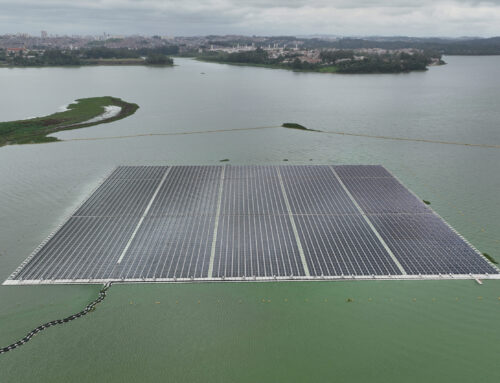Meta Platforms – High EVA Shows Why The Premium Is There
November 28, 2025
This article first appeared on GuruFocus.
YTD Meta has performed incredibly well, outperforming many of its Mag 7 friends. The stock is up 28.61% YTD and 55.7% since bottoming in late April when the initial tariffs were announced. Compared to SPY and MAG 7 ETF, which are up 10.4% and 9.9% respectively. In context, this means that markets initially overreacted to the impact that would have on Meta, fearing that ad spending would crater due to lower import demand from foreign countries. This has been proven false, leading to the sharp V shape recovery it has experienced.
Revenue is up 18.6% YTD, with OPEX rising 10.8% providing a 1.72x spread. In 2025 Meta applied a much stricter employee structure. At the start of the year, Meta laid off 3600 employees. The impact of layoffs means 44% less expenses relating to General & Administrative or $2.171 billion in savings. Rising R&D spending, however, offset much of these savings as it grew 21.9% YTD in comparison to 2024 during the same period. Net margins rose to 38.9%, up from 34.2%. Reality Labs continues to be a disappointment, showcasing 1.4% lower revenues and 4.8% higher operating losses.
Multiples have changed from the start of the year to now. At the start Meta FWD P/E was 23.85, which arguably was a conservative multiple for the company compared to historical growth and margin retention through the years. This is besides the point which is how it has gone from that to 27.56 now, marking a 15.5% increase in 6 months. As shares rose 28.61%, over half of that was due to multiple expansion. Compared to its largest competitor Google which has experienced a multiple compression from 21.51 – 18.63 (-13.4%). This marks a shift in market preference between these large ad companies.
Reuters recently reported on how Meta seeks to increase licensing on AI images, potentially leading to new revenue streams if companies wish to use them for their own purposes. The news came as Meta signed a deal with AI Image company Midjourney. The move is in an effort to reduce content production costs and potentially translate this to higher engagement overall.
What really made people turn an eye the past week was that a court filing revealed that Elon Musk sought out Mark Zuckerberg to help with forming a bid to take over OpenAI. The bid stood at $97.4 billion. The general air between Musk and Sam Altman seems poor as the bid is almost done in a hostile manner, with many public jabs thrown by both sides over the past several months.
The past week Meta has also paused all AI talent hirings in an effort to remain conservative in spending. Markets seem to have reacted largely positively to this as it means admin expenses will not return to last year’s levels anytime soon. The news comes as Meta announces further restructuring in its internal AI team in order to boost worker efficiency as it divides the AI segment into four groups, leading to better oversight.
US fiscal policy has undergone significant changes over the past decade, marked by changing presidents and political policies, but above all, a pandemic and fears of complete shutdowns in economic activity. Leading up to the 2020 interest rates were 2.5%, increasing from 0.25% in 2015.
During the same period, 2015 – 2019, total US advertising expenditures rose 17.7%. This leaves the impression that more conservative fiscal policies or QT had little impact on ad spending. This makes the case that ad companies are generally quite recession-proof.
During the time between 2015 and 2019 did the US economy did not experience a negative development in GDP. For reference, these figures are from Tradingeconomics and advertising expenditures data are from IBISWorld.
As expected, Metas’ revenues grew between 2015 – 2019 at a rate of 294%. The only years when Meta did not showcase the same momentum were 2021 and 2022. Ad expenditures continue rising but it took until 2023 for it to move above 2019 figures. During the same period, interest rates were low.
However, despite a 180 in US fiscal policies as QT began, revenue growth returned for Meta, reaching record levels eventually. This leads me to believe that in general, ad companies such as Meta are quite resilient to rapid changes between QT and QE. With recent news about a September rate cut I believe we will continue to see revenue growth more impacted by how well Meta can maintain market share rather than changes in interest rates which generally affect company spending.
In the annual report from Salesforce, one of the competitors to Meta they reveal how much of the channels used including the top markets which Meta operates in, namely Social Media and Digital Ads, at 93% and 91% each. In the report, it included how the top tools for increasing the effectiveness of ads are Customer Insight, First Party Data and Transactional Data. All of these are something Meta covers.
YTD Meta has deployed $31.8 billion in cash. The marketable securities have been left largely untouched, despite being included in the current assets. Liquid cash still sits at $12 billion providing Meta with further opportunity in capital deployment. Large parts of the cash used were for properties, namely data centers. For the remaining 6 months, inventors can expect Meta to deploy an additional $30 – 35 billion for data center investments, as outlined by CEO Mark Zuckerberg earlier this year. Given Meta has a high borrowing capacity, issuing notes to raise capital is one route to go down. In part this gives Meta an edge against competitors because it has a higher ceiling before it becomes too leveraged.
YTD total assets have grown 6.5% whilst total liabilities have grown 6.6%, the ratio between them remains high at 2.95x, providing Meta with plenty of legroom to increase leverage should it be necessary to gain a bigger edge.
The structure of the balance sheet remains cash-heavy with large concentrations of assets found in marketable securities and non-marketable equity investments. Debt management remains highly conservative with only possible because of the high net margin where profits now fund much of the necessary infrastructure investments. Asset efficiency has also improved, being 0.273 in 2024 and 0.304 in 2025 YTD, marking an 11.3% improvement.
Meta in comparison to peers such as Google and Salesforce, showcases the highest valuation by some margin in all categories. But moving further down, it’s revealed why this is the case. Future revenue growth is by far the highest at 19.06%.
Besides, the EVA or Economic Value Added for Meta is 66.8% which means for every dollar spent, Meta realises $0.668 in profits. Excess cash remains high since necessary operating cash is generally quite low, normally between 2 – 3% for Meta. Due to the large size, we can also use a lower WACC input. I expect EVA and EVA margin to rise further in 2025 and 2026 especially as more data centers are up and running. Heavy investments in AI to make workloads of employees more efficient should further drive up EBIT.
YTD performance remains strong, market sentiment remains strong and advertisement expenditures remain high even during more conservative fiscal periods.
Search
RECENT PRESS RELEASES
Related Post




